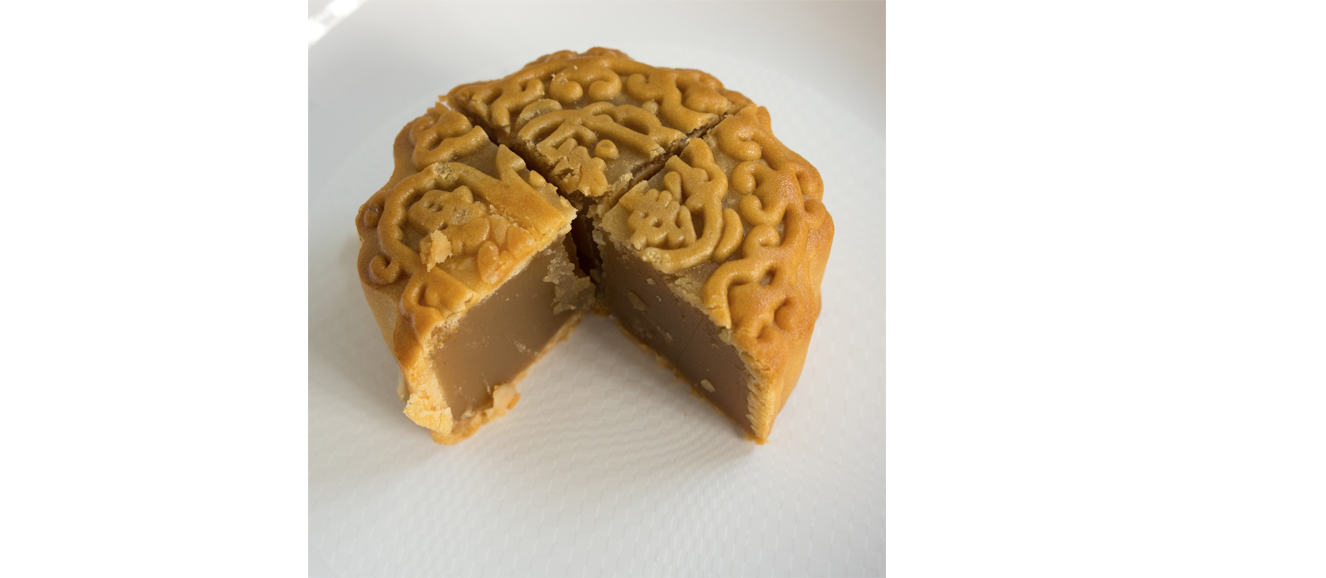To this day, when I bite into a mooncake, I taste and feel the magic of the Moon Festivals I celebrated as a student in China.
The Mid-Autumn Moon Festival, celebrated throughout Asia and in Chinatowns worldwide, falls on the 15th day of the eighth month of the Chinese Han calendar. This happens within 15 days of the autumnal equinox on the night of the full moon. (The festival coincides with our Harvest Moon, the most brilliant moon of the year.) After a hot summer, the sun’s powers of light begin to wane. The yin, or female principle, as personified by the moon, takes over from the yang, or male principle, as embodied by the sun. In China, women play the main role in moon- gazing and the worship of the moon, a symbol of harmony and family unity. Families gather in courtyards to give thanks for the harvest and perhaps remember the ancient fable about the sun and moon as a romantic couple. The stars are their children. When the moon is pregnant, it becomes round and full, and then, after giving birth to a star baby, it gradually becomes a crescent.
In China, people gather in the main squares where an infinite variety of paper and bamboo lanterns — usually made by children and shopkeepers in original and beautiful designs displaying rabbits, birds, fish and flowers — hang in gardens. Sky lanterns float everywhere — rising, falling and twirling. My three siblings and I would join the parade of young people carrying their lanterns under the full moon.
Some lanterns had riddles written on them. Everyone had a great time guessing the answers. My father, a Canadian diplomat who poured maple syrup on his mooncakes, always wrote the same riddle in Chinese characters: “What goes up the chimney down and down the chimney down but can’t go up the chimney up or down the chimney up?” An umbrella — ha, ha.
In the old days of the festival, Peking opera singers — wrapped in flamboyant robes, emoting in falsetto voices — performed on wooden stages accompanied by a cacophony of gongs, flutes and fiddles. Acrobats tumbled through the groups of cheering children. Stilt-walkers in weird outfits and fierce masks towered above the crowds.
But nothing captures the harvest festival quite like the making and sharing of mooncakes. Made in early August, they’re gift-wrapped in gaily decorated boxes to be presented to friends and business associates. The cakes are round and firm, made of rich, flaky pastry and filled with various combinations of sugar, honey, figs, apricots, lotus-seed paste, pitted dates, raisins, red-bean paste and sesame seeds. One tradition is to stack 13 cakes to resemble a pagoda, the number 13 representing the months in the full lunar year.
Although homemade cakes are a few inches wide, imperial chefs often made them with a span of several feet. Their surfaces were enhanced with designs of the lunar deity, Chang’e, worshipped as the Moon Goddess of Immortality. Her image was often embossed on the cakes with the Jade Rabbit, who accompanies her in the Moon Palace.
A myth surrounding the moon goddess — contained in Lihui Yang’s “Handbook of Chinese Mythology” — tells the origin of moon worship some 4,000 years ago. The hero (Hou Yi) was an excellent archer who was married to the beautiful Chang’e. One year, 10 hot suns rose in the sky, causing great disaster. Yi shot nine suns out of the sky with his bow and arrow but left one to provide warmth and light. One of the eight immortals, Peng Meng, admired Yi and sent him the elixir of immortality. Yi didn’t want to leave Chang’e so he gave the concoction to her.
But Peng Meng knew the secret. So on Aug. 15, he tried to force Chang’e to return it. Instead she swallowed the magic potion and flew into the sky. She landed on the moon and became its spirit.
Thereafter, everyone would give thanks, eat mooncakes, burn incense, perform dragon dance and have fun being moonstruck.




